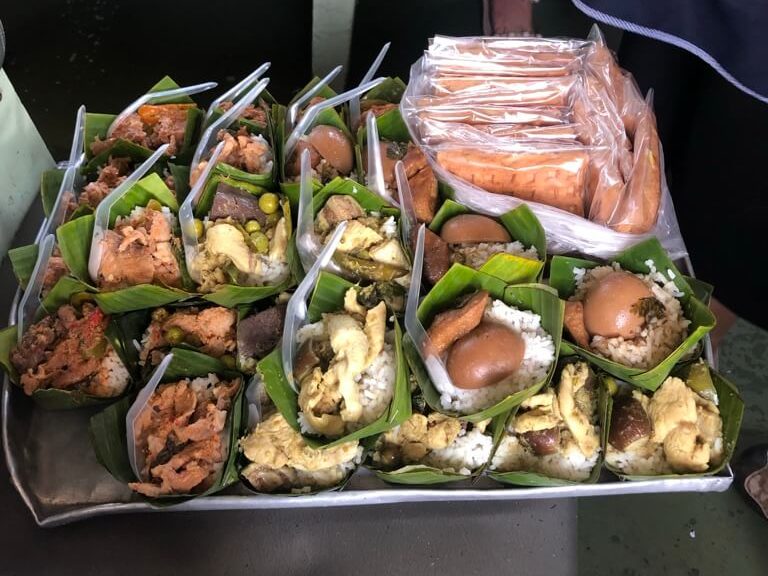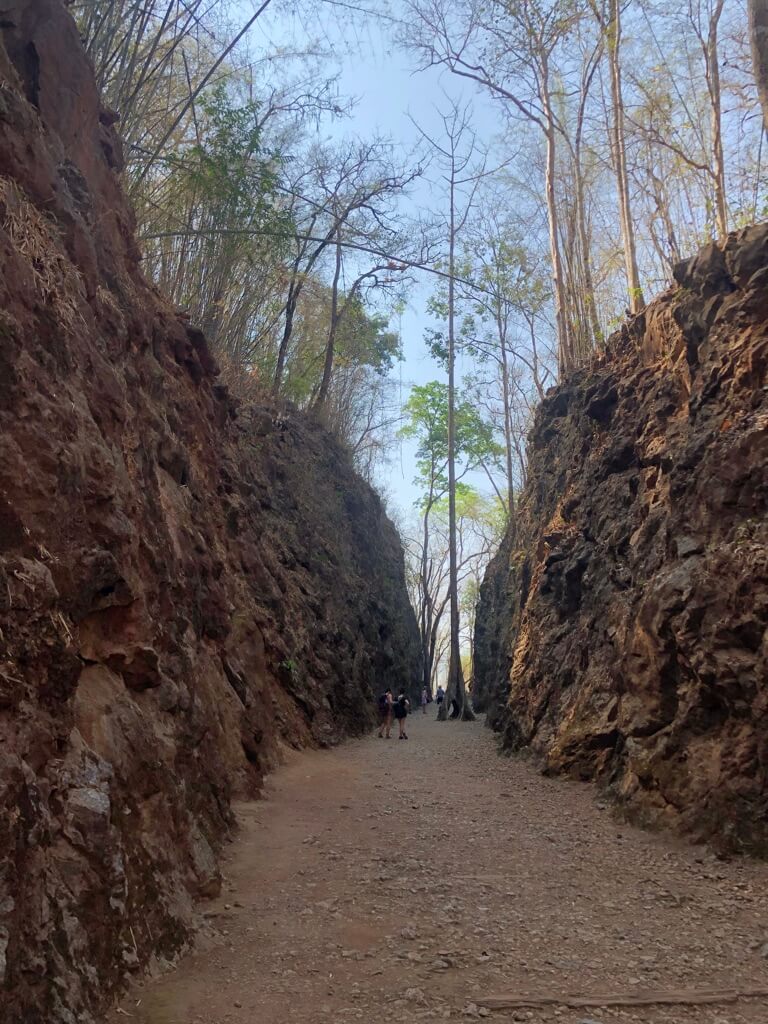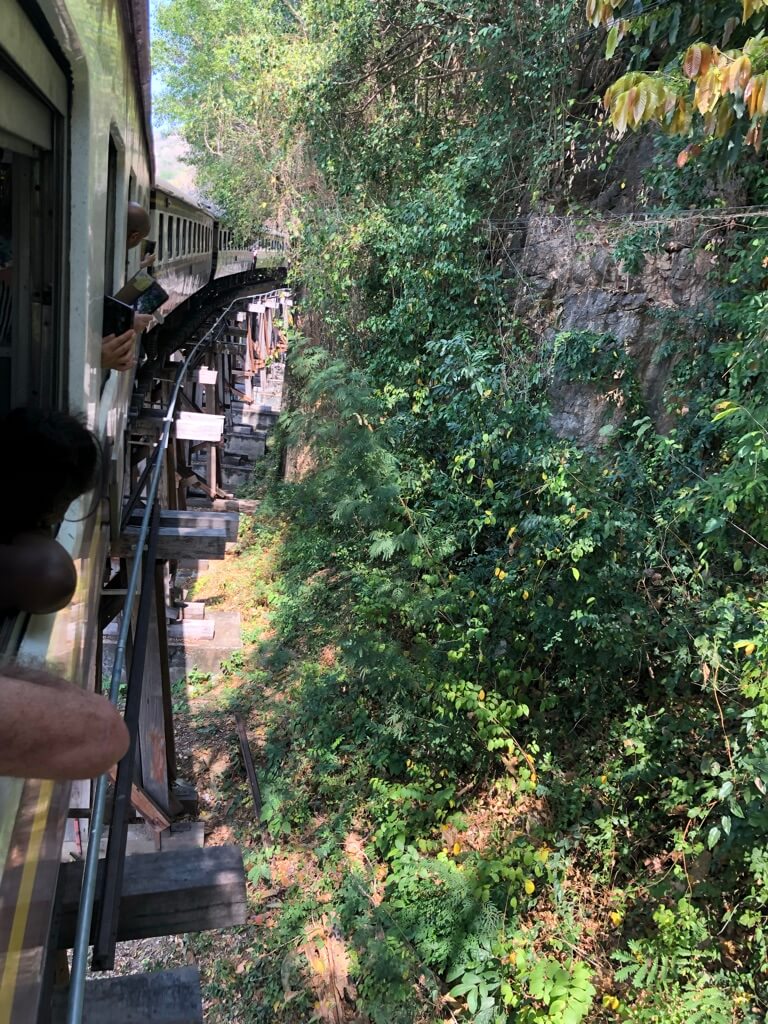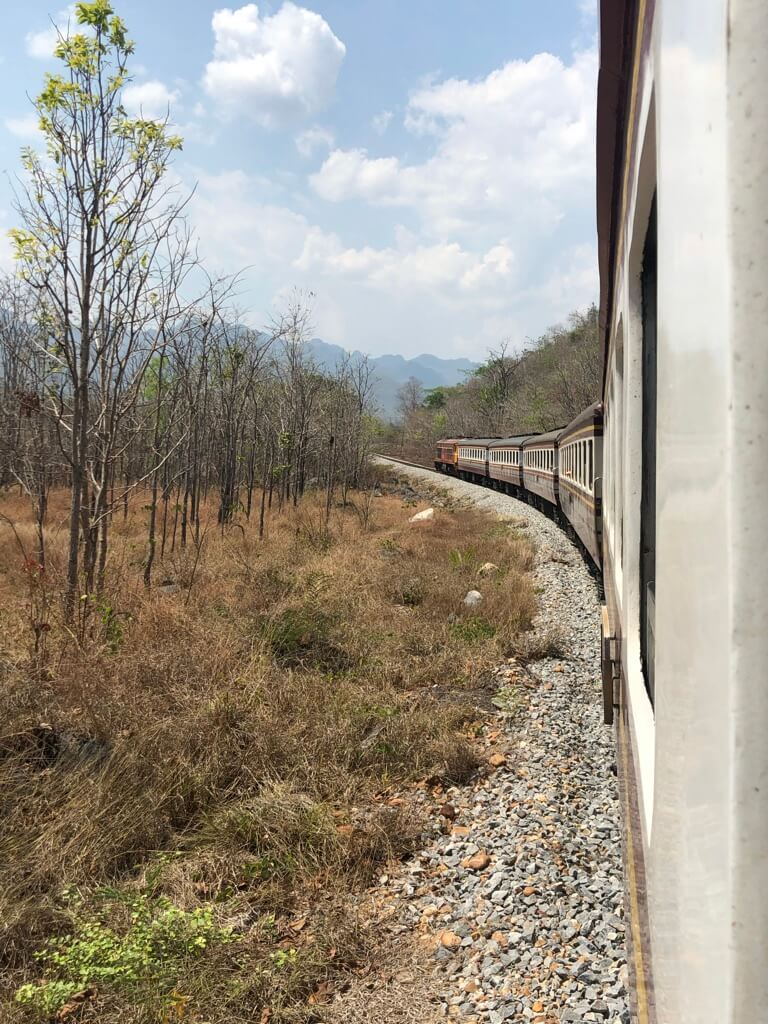
Whenever Mr C and I travel anywhere I feel it’s really important to see a bit of history, and here in Kanchanaburi with found it in bundles. Hellfire Pass is a railway cutting made by hand for the Burma Railway, also known as Death Railway. Prisoners of War were used as forced labour to carve out the route through the rocks. So many people died during the creation due to the horrendous conditions they were made to work in. This particular section is so called ‘Hellfire Pass’ due to the torches lighting it up at night. They resembled a vision of Hell the prisoners were actually living in. Today on the site there are guided tours of the area and an excellent museum. Here is my suggestion for how to experience Hellfire Pass, Death Railway and the other attractions in the area.
Where is Hellfire Pass & The Death Railway?
Approximately three hours by car from Bangkok, the area you will find Hellfire Pass in is right in the middle of Sai Yok National Park. Dense jungle, mountain ranges and rivers fill the area, make sure to look out for the local wildlife! You will quickly see just how difficult the terrain would have been to try and cut through for the POW’s!
How Else to Get There?

Train…….I highly suggest this mode of transport on your way to or from Bangkok. You get to experience how the locals get about and the scenery is amazing. When you stop at stations food sellers get on with delicious snacks so you wont get hungry!
What Is There To See In The Area around Hellfire Pass & Death Railway?
Hellfire Pass

Chiselled by hand and blown up with dynamite, this gulley was created by the POW’s who were forced to build the railway. This is the most famous part of the area of the Pass you can walk around, approximately 75 metres in length and 25 metres deep. Working night and day the 415 km stretch of the Burma railway was completed in a mere 12 months. This was due to the strategy of working on the entire length simultaneously, and not just from either end. I’m unsure just how many men lost their lives creating this, however they are remembered in several memorial sites around the area (see below).
Touching Memorials


This memorial honours the lives of so many men who lost their lives in the creation of this railway track. Prisoners of War from America, Australia, Holland and Britain were forced to work alongside conscripted Burmese, Malay and Thai men.
The Old Railway Tracks

For me, walking along the ‘tracks’ was the most interesting part. Mostly due to the fact the tracks are still visible and the terrain they had to build them over was incredibly steep at times. The hard work it would have taken to create this would have been immense and must have seemed crazy! As you walk along the suggested pathway the views are incredible, you can see for miles.

This scenery would have been very different in the 1940’s, it used to be covered in water (or this would have been a much flatter area to have built on surely!). When we visited it was a vast expanse of green vegetation with a river somewhere in the distance. There are several walking routes available for you to take to really get a feel for the environment. It was immensely hot when we were there so we opted for the shorted loop and still sweated buckets. Take plenty of water with you if you are going in the hot season, and watch out for the insects!
Hellfire Pass Interpretive Center

Before you get to the actual Pass, your tour will guide you through this amazing museum. Here you can learn about how the pass was created and much more about the Prisoners of War and the conditions they were made to live and work in. Sensitive and informative, I am so pleased this is part of the experience. It certainly makes you think about those men when you are walking around the old tracks feeling a bit hot just from a short walk. Most of the men had to walk a couple of km’s before they even arrived at the building sites, with barely any food or water. This whole experience was really humbling and certainly made me appreciate all that I have in life.
Hellfire Pass & Death Railway – Experience it By Actually Riding It!



There are several stations where you can jump on the Death Railway train, we chose Thakilen. Trapped in a time warp it is a really cute station! The guard was dressed in an immaculate uniform and waved his flags around as the train approached. Choose your seat; either side of the train will do as you will get amazing views at different times from each side (see below).
The Famous Wampo Viaduct
As you can see there is much to see from either side of the train. Terrifying at times, this journey is simply amazing. You can hear the wood creaking beneath you from the original viaduct (I didn’t tell Mr C about this). At certain points it can reach 10 meters in height, luckily it is still in excellent condition. As the train only runs a few times a day you can walk along some of it if you choose to, although I would not recommend it. Where would you go if you were 10 metres in the air and the train was coming???
The ride is fairly slow at times along the higher sections, and as you can see from the photographs, you get pretty close to the cliffs at times. Whereas on the other side there is quite a long drop to the ground below! Mr C sat firmly in his seat for most of the journey, only getting brave to hang out of the door when the train had come to a stop. I can highly recommend this part of the trip, the scenery and noise is truly unique.
Bridge Over The River Kwai

Not the prettiest bridge and also not the original either which was bombed in the second world war and has been rebuilt since. And the name itself is all wrong too as the river is not the Kwai. The word Kwai means river, and therefore when the prisoners kept hearing the word Kwai, they thought that was the name of the river. So in fact when you say it is the bridge over the River Kwai, you are calling it the river river! However it is still one of the most famous bridges in the world and is also a place where you can catch the train. From here you can head to Hellfire Pass or as we did, head in to Bangkok! There are also plenty of shops and restaurants dotted around here if you need any supplies or a bite to eat.
Kanchanaburi Cemetery

Not far from the bridge is a beautiful cemetery a a museum. Here you can learn more about the history of the bridge and Death Railway. Our guide found one of our ancestors here which was such a kind touch and very thoughtful.
I hope you can take away something from ‘How to experience Hellfire Pass & Death Railway’. For more things to see and do in the area please visit my blog on Kanchanaburi.
Where to Stay Around Hellfire Pass & Death Railway?

Are you looking for an unusual and amazing place to stay? How do you feel about staying in a floating hotel? We stayed at the Floathouse for 2 nights and it was simply fantastic. Read all about it in my blog all about this amazing floating luxury hotel!



